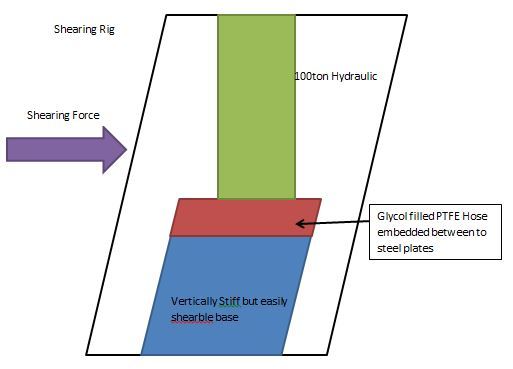Hi,
This is the first time I am using this forum. Thank you all in advance.
I have a problem with hydrostatic pressure increase in a fluid sack sealed within a rigid support that I am shear testing.
The set-up is quite simple, the fluid sack is filled with an incompressible fluid and a vertical force is applied to it. The sack is an internal part of a rigid structure, both undergo the vertical force. Whilst in this situation a large cyclic horizontal shearing force is applied to the rigid structure. I am measuring the pressure inside the fluid sack with a pressure transducer.
My question is, the pressure inside the sack starts to increase slowly but steadily once the shearing action is started, after 7000 cycles there is roughly a 45% pressure increase. Once the cyclis shearing is stopped, the pressure backs off only a small amount. Why do you think this might be, is there an effect I have not considered?
Thanks again.
This is the first time I am using this forum. Thank you all in advance.
I have a problem with hydrostatic pressure increase in a fluid sack sealed within a rigid support that I am shear testing.
The set-up is quite simple, the fluid sack is filled with an incompressible fluid and a vertical force is applied to it. The sack is an internal part of a rigid structure, both undergo the vertical force. Whilst in this situation a large cyclic horizontal shearing force is applied to the rigid structure. I am measuring the pressure inside the fluid sack with a pressure transducer.
My question is, the pressure inside the sack starts to increase slowly but steadily once the shearing action is started, after 7000 cycles there is roughly a 45% pressure increase. Once the cyclis shearing is stopped, the pressure backs off only a small amount. Why do you think this might be, is there an effect I have not considered?
Thanks again.

